Affiliate disclosure: This post may contain affiliate links. Please see our Privacy Policy.
Canning mangoes at home is a great way to preserve an otherwise expensive fruit for cooking all year round. When you can mangoes at home, you can use as much or as little sugar as you’d like, meaning that they’re much more versatile than store-bought.
Most of the year, mangoes are unbelievably expensive, especially in the Northeast.
Once mangoes come in season in mid-summer, the grocery stores are almost giving them away. They sell for as little as 50 cents a piece, down from $3 or more each. When that happens, it’s time to get canning!
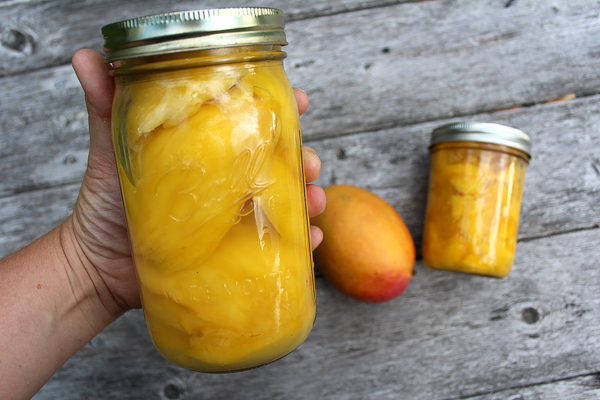
So here it is, early July, and we’re in the middle of a record-breaking heat wave. I’m combing the aisles of the grocery store, planning on living on nothing but fruit for the next week.
Then there it is, a truly beautiful sight to behold. Mangoes stacked high in cases half way to the ceiling, and at 2 for $1. I brought home 2 cases without any sort of plan.
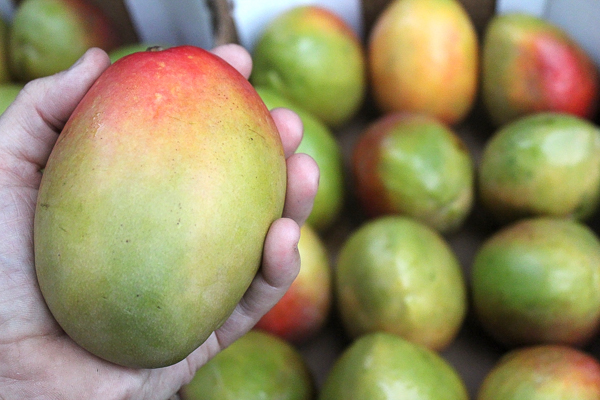
I’d just bottled up a small batch of mango wine made from mango nectar. Mangoes are never quite cheap enough around here to justify making wine with fresh mangoes. As soon as I break down and make a batch, they go on sale.
It figures. Nonetheless, I’ve got mango wine in the bottle. What else can I make?
Next up was fresh mango lassi and Thai sticky rice with mango. Both delicious, but I’ve still got piles of cheap mango left and the clock is ticking. Time to get canning.
Is it Safe to Can Mangoes?
So here’s the tricky part. Mangoes seem acidic just like any other fruit, but their ph can on occasion be slightly above the safe level for canning.
Fruits need to be below a pH of 4.5 for water bath canning on their own, and mangoes range between 3.4 and 4.8. That means it’s possible that any given mango might not be quite acidic enough for safe canning.
Since mangoes aren’t exactly the most popular canning fruit, the USDA has not developed specific canning recommendations. There are a number of studies that have studied the safety of adding acid to canned mangoes. The USDA has developed canning recommendations for other low acid fruits, such as papaya.
Papaya is much less acidic than mangoes, ranging from a pH of 5.2 to 6.0. The USDA recommends adding 1/4 cup of lemon juice to each quart of papaya to allow for safe water bath canning.
Following that same direction should be more than adequate for a much more acidic fruit like mangoes.
That said, this recipe has not specifically been tested by the USDA. Canning is always “at your own risk” but that’s especially so when using untested canning recipes. Use your best judgment here, and realize you are responsible for your own safety when using untested canning recipes.
How to Can Mangoes
Canning mango is about as simple as putting any other sort of fruit. It’s naturally high sugar but often don’t have quite enough acid for water bath canning on their own.
They’ll need a bit of acid added to the canning liquid to ensure that their pH is below 4.5. Mangoes will need 1/4 cup of lemon juice added to each quart, or 2 Tablespoons added to each pint.
Sliced or chopped mango is canned in a sugar syrup. Anywhere from very light syrup, which mimics the natural sugar content of the fruit, all the way up to very heavy syrup which basically makes a candied mango.
I’m canning this mango in very light syrup because mangoes are sweet enough as it is, but since there’s so much added lemon juice you may want to add slightly more sugar depending on your tastes. I just want enough sugar in the syrup so that the flavor of the mango doesn’t get washed out into the water, but not so much that it makes the mangoes any sweeter.
Very light syrup uses 3/4 cups of sugar for every 6 1/2 cups of water. That’ll make enough for a canner batch of 9 pints. I’ve used quite a few of my mangoes already, and I only have enough left for 3 pints.
A tiny batch of very light syrup can be approximated at 1/4 cup of sugar to 2 cups of water. That’s actually slightly more sugar in the ratio, but it doesn’t need to be exact.
Extra heavy syrup, in case you’re wondering, has a 1 to 1 ratio of sugar and water. So anywhere between a 1:8 and 1:1 sugar to water ratio works. Adjust to your own tastes.
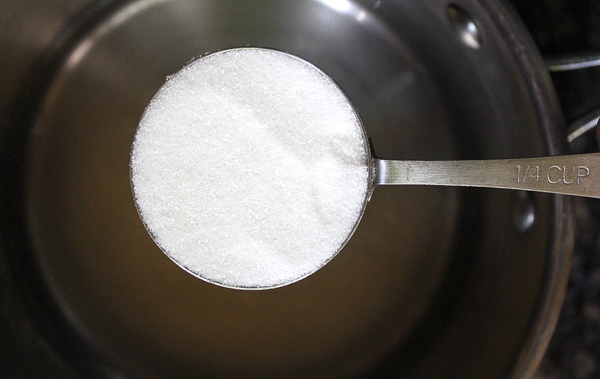
Peel and seed the mango, leaving the chunks however you’d like. A quart jar can hold approximately 5 mangoes, or more accurately 10 mango halves. I bottled up one quart with large chunks, leaving the pieces as large as I could while still removing the seed.
You can fit slightly more mango into a jar if they’re diced, and I packed 3 diced mangoes into a wide mouth pint jar.
Mango should be packed relatively tightly in the jars because the fruit will shrink in the canner during processing. This is the same for any raw packed fruit.
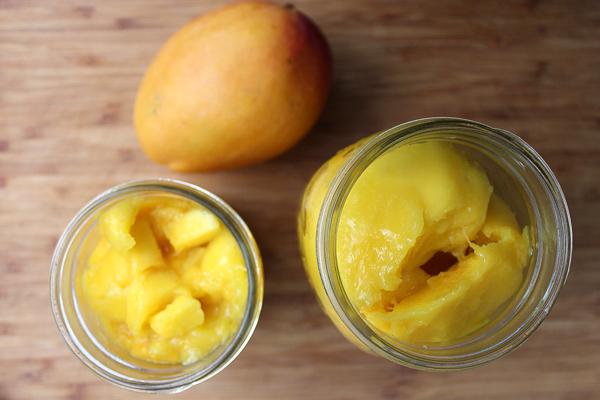
Once you’ve decided how to slice them, pack the mangoes into a pint or quart mason jar. Add 1/4 cup of lemon juice to each quart or 2 Tbsp of lemon juice to each pint jar. Set the jars aside while you make a syrup.
Add water and sugar to a saucepan and stir to dissolve. Heat the syrup in a saucepan, and once it’s boiling, pour it over the top of the mangoes leaving 1/2 inch headspace.
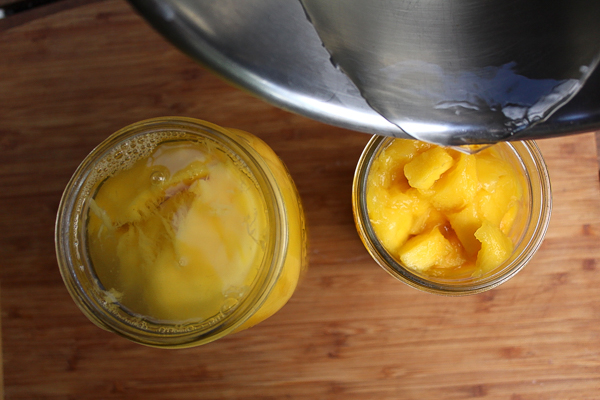
The process times for canned mangoes are the same as home canned pineapple. Process pints and half pints in a water bath canner for 15 minutes, and quarts for 20 minutes.

Canning Mango
Ingredients
- 8 or 9 mangoes, peeled and seeded
- 1/4 cup sugar
- 2 cups water
- lemon juice, See Note Below
Instructions
- Slice the peeled and seeded mango into chunks or leave them in large halves. Pack the mango into mason jars, leaving 1/2 inch headspace.
- Add 1/4 cup of lemon juice to each quart or 2 Tbsp of lemon juice to each pint to ensure proper acidity. Set the jars aside and while you make a canning syrup.
- Bring sugar and water to a boil on the stovetop. Stir to dissolve the sugar.
- Pour the boiling syrup over the mangoes in canning jars. Remove air bubbles with a plastic utensil. Seal the jars with 2 part lids.
- Process in a water bath canner. Process times are 15 minutes for pints and half-pints, and 20 minutes for quarts.
Notes
Nutrition
Nutrition information is automatically calculated, so should only be used as an approximation.
How to Use Canned Mango
Now that you have shelf-stable mango all canned up in the pantry, how do you use it? Canned mango is almost as versatile as fresh mango, and in many cases, you can barely tell it’s cooked. Try using home-canned mango in any of these recipes:
- Mango Lassi
- Mango Lassi with Kefir
- Mango Mousse
- Kale Salad with Mango, Avocado and Feta
- Roasted Mangoes with Blueberries and Walnuts
- Almond Butter Mango Overnight Oats
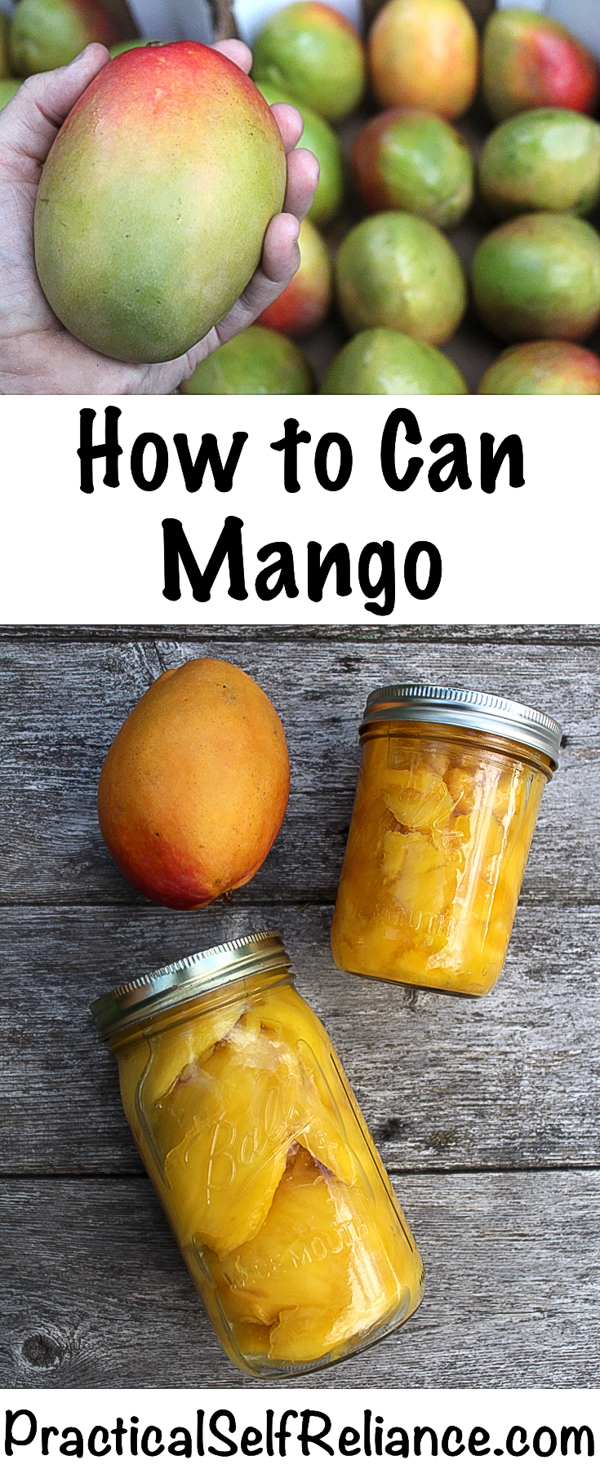
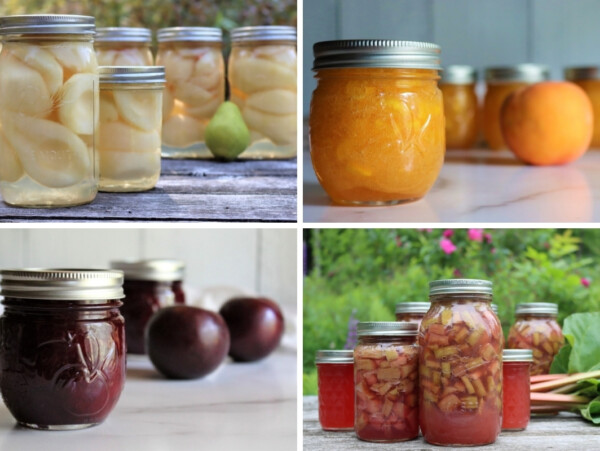
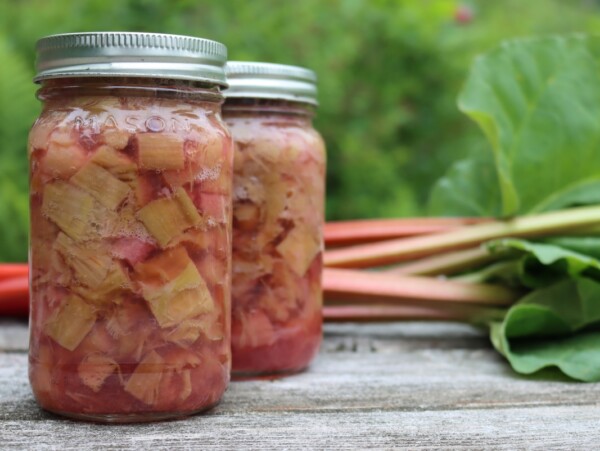
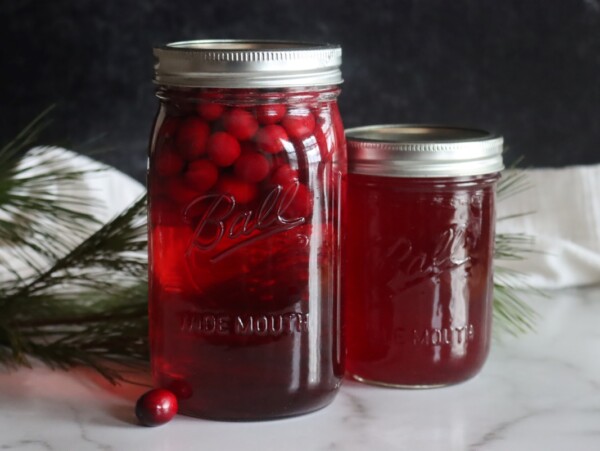
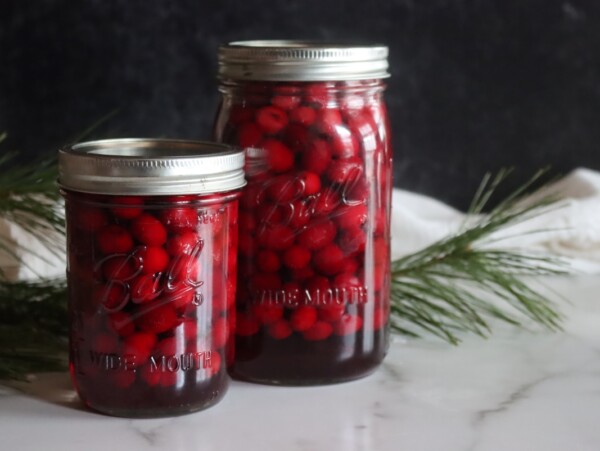
Thank you, this was tasty and easy ❤️
I live in Mexico, so limes are abundant and lemons kinda rare. Can I substitute limes? I noticed you use them in the mango salsa.
We have a mango tree, so we are getting ready to Can.
Your website is much appreciated!
Brian
Yes, you can substitute lime juice in place of lemon in any canning recipe. Enjoy!
Have you ever tried pineapple juice instead of lemon?
Lemon juice is needed to create the correct acidity.
Kimberly, I really like the color of the fresh mango salsa vs the muted coloring of a heated to boil mix. Is it possible to can the fresh directly with a light syrup/lemon added to jars vs being heated together to a boil and then canned?
This recipe does not call for the mango to be cooked. The water and sugar are heated to a boil to create the canning syrup which is then poured over top of the mango.
Is it safe to can mango pulp?
When you say pulp, do you mean like a mango puree?
Thanks for the great info on canning mangoes. I live in Australia and love them, and am about to can two boxes!
Thanks for the great info on canning mangoes. I live in Australia and love them, and am about to can two boxes!
The first time I made this mango recipe, the jars did not seal. Still can’t figure that one out! All was well because It turned out that I forgot to put the lemon juice in them and that was a very smelly problem in my pantry.
I remade it again with the lemon juice and kept one jar that I put in the fridge for ourselves. It was delicious!
Today I just made several jars and just processed them. I love this easy recipe and mangoes are so well received as gifts to my peeps..
Living near the border of Az. and Mexico has it’s benefits for such fruit like mangoes.
Thank you for publishing this recipe for us all.
Kimberley
The first time I made this mango recipe, the jars did not seal. Still can’t figure that one out! All was well because It turned out that I forgot to put the lemon juice in them and that was a very smelly problem in my pantry.
I remade it again with the lemon juice and kept one jar that I put in the fridge for ourselves. It was delicious!
Today I just made several jars and just processed them. I love this easy recipe and mangoes are so well received as gifts to my peeps..
Living near the border of Az. and Mexico has it’s benefits for such fruit like mangoes.
Thank you for publishing this recipe for us all.
Kimberley
That’s great! Thanks for sharing. We’re so glad you enjoyed the recipe.